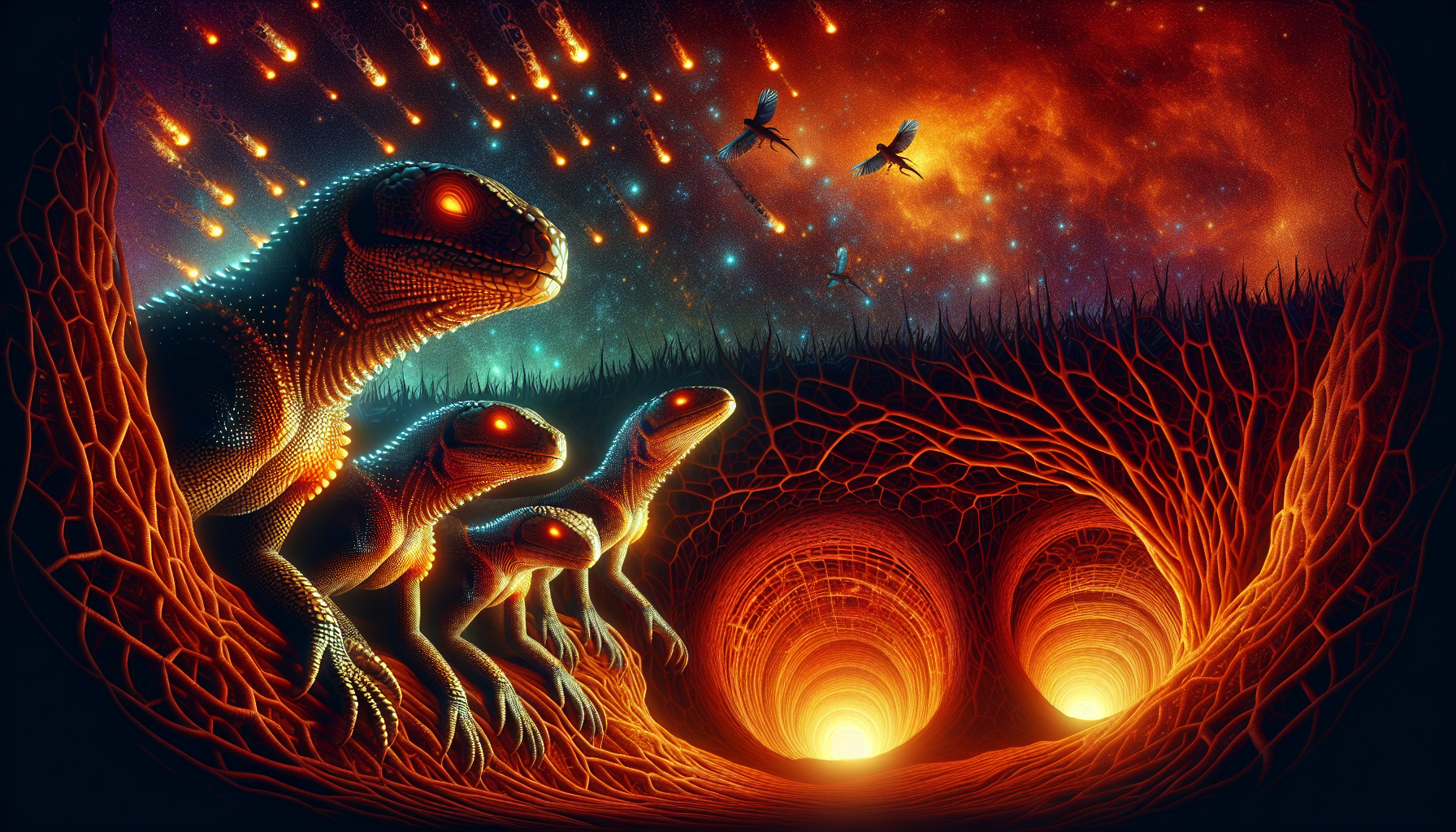Beneath the Surface: The Origins of the Lizard People Myth
An Ancient Narrative
The concept of lizard people, or reptilian humanoids, can be traced back through various cultures and mythologies. From ancient Sumerian texts to modern urban legends, these creatures have captivated human imagination. Tales of beings resembling reptiles appear in the folklore of multiple civilizations, often depicted as powerful, cunning, and sometimes sinister.
Modern Conspiracies
In contemporary times, lizard people gained massive attention largely due to conspiracy theories propagated by various authors and media personalities. David Icke, a British conspiracy theorist, famously claimed that world leaders were actually shape-shifting lizard beings. His theories intertwine with ideas about secret societies and a hidden elite controlling humanity, striking a chord with those skeptical of authority.
The Lore of Lizard People: Characteristics and Beliefs
Physical Traits
Descriptions of lizard people vary significantly across different accounts, but certain traits are often common. They are typically depicted as tall, slender beings with scaly skin, glowing eyes, and a forked tongue. Their physical appearance is often seen as a fusion of human and reptilian characteristics, leading to perplexing yet fascinating imagery.
Behavior and Intelligence
Adherents to the lizard people theory often claim these beings possess superior intelligence and an array of otherworldly abilities, including telepathy and shape-shifting. Such traits allow them to manipulate human emotions and thoughts, lending an air of mystery and terror to their narrative. Believers assert that the lizard people are capable of infiltrating human society, living among us undetected.
Lizard People in Popular Culture
Film and Television
The cultural impact of lizard people is evident in various movies and TV shows. From 1990s science fiction series like “V,” which featured alien reptiles masquerading as humans, to films like “They Live,” where individuals discover a hidden reality, these narratives explore themes of deception, control, and societal manipulation. Such portrayals merge entertainment with underlying social commentary, prompting viewers to question their own realities.
Literature and Art
Beyond screen adaptations, lizard people have found a space in literature and visual art as well. Numerous sci-fi and fantasy novels delve into reptilian races and societies. Paintings and sculptures often depict these creatures, forcing viewers to confront their own fears and anxieties about authority and power.
Theories Behind Their Emergence
Subterranean Civilizations
One popular theory posits that lizard people reside deep beneath the Earth’s surface. Proponents of this idea believe in vast, underground cities where these beings develop their civilization away from human eyes. Such speculations draw connections to unexplored cave systems and ancient legends of lost civilizations, like Atlantis or Lemuria.
Scientific Explorations
While many view the notion of subterranean civilizations as purely speculative, it’s fascinating how areas of our planet remain largely unexplored. Skimming the fringes of scientific inquiry, researchers continue to delve into the mysteries of our planet’s crust. With advanced technology, geologists uncover unforeseen environments, such as underground rivers and sprawling caverns, sparking curiosity about what might lurk unseen.
Symbolism of Reptiles
Reptiles have long been associated with the unknown in many cultures. They symbolize primal instincts, fear, and transformation, attributes that parallel societal anxieties around power and control. The idea of lizard people can often be seen as a metaphor for those in power who are perceived to act in self-interest rather than for the greater good, evoking a spectrum of emotions from paranoia to rebellion.
Encounters and Allegations
Claimants and Sightings
Numerous individuals across the globe have professed encounters with lizard people. Stories share a common thread of the witnesses experiencing strange sensations, leading to an unsettling realization of not merely observing, but being watched. While skeptics dismiss these claims as products of imagination or delusion, they fuel ongoing dialogue around the nature of reality and human experience.
Media Influence
With modern media amplifying these experiences, rumors quickly spiral, often taking on a life of their own, leading to the creation of “sightings” and conspiracies. Online platforms serve as breeding grounds for these narratives, where users can freely share their beliefs and experiences, attracting believers and skeptics alike. The resulting conversations often reflect broader societal contexts, tapping into fears about control, technology, and the environment.
The Cultural Reflection of Lizard People
Societal Commentary
The reptilian narrative resonates with modern anxieties about authority, corporate greed, and surveillance. As people feel increasingly disenfranchised, the idea of a hidden elite pulling strings from the shadows becomes more appealing. Fictional portrayals often represent a society that hides dark secrets, allowing individuals to channel their frustrations into these myths.
Connecting with Nature
Additionally, the lizard person myth can be interpreted as a call to reconnect with the natural world. As humanity progresses further into urbanization and technology, folklore serves as a reminder of our primal, foundational connections. Ultimately, these stories nudge us towards introspection about our relationship with ourselves, nature, and the unseen forces of the world around us.
Scientific Perspective on the Existence of Lizard People
Critique of Reptilian Theories
Despite the gripping narratives, scientists largely discredit the existence of lizard people. Genetic limitations and evolutionary biology suggest that the traits ascribed to these creatures are unrealistic. Most research finds no credible evidence supporting the existence of humanoid reptiles sharing the Earth with us.
The Role of Psychology
Psychology provides some insight into why people gravitate towards such theories. The phenomenon of pareidolia, where individuals see patterns or familiar shapes in chaos, can explain instances where people perceive reptilian features in others. Furthermore, cognitive biases can lead to skewed interpretations of reality, highlighting the need to engage critically with the information presented.
The Importance of Skepticism
Critical thinking becomes paramount when exploring beliefs surrounding folklore and conspiracy theories. While engaging with these narratives can be entertaining, it’s essential to approach them with a healthy dose of skepticism. As society continues evolving, blending the concrete with the imaginative can lead to enriching discussions—but discernment should always be at the forefront.
